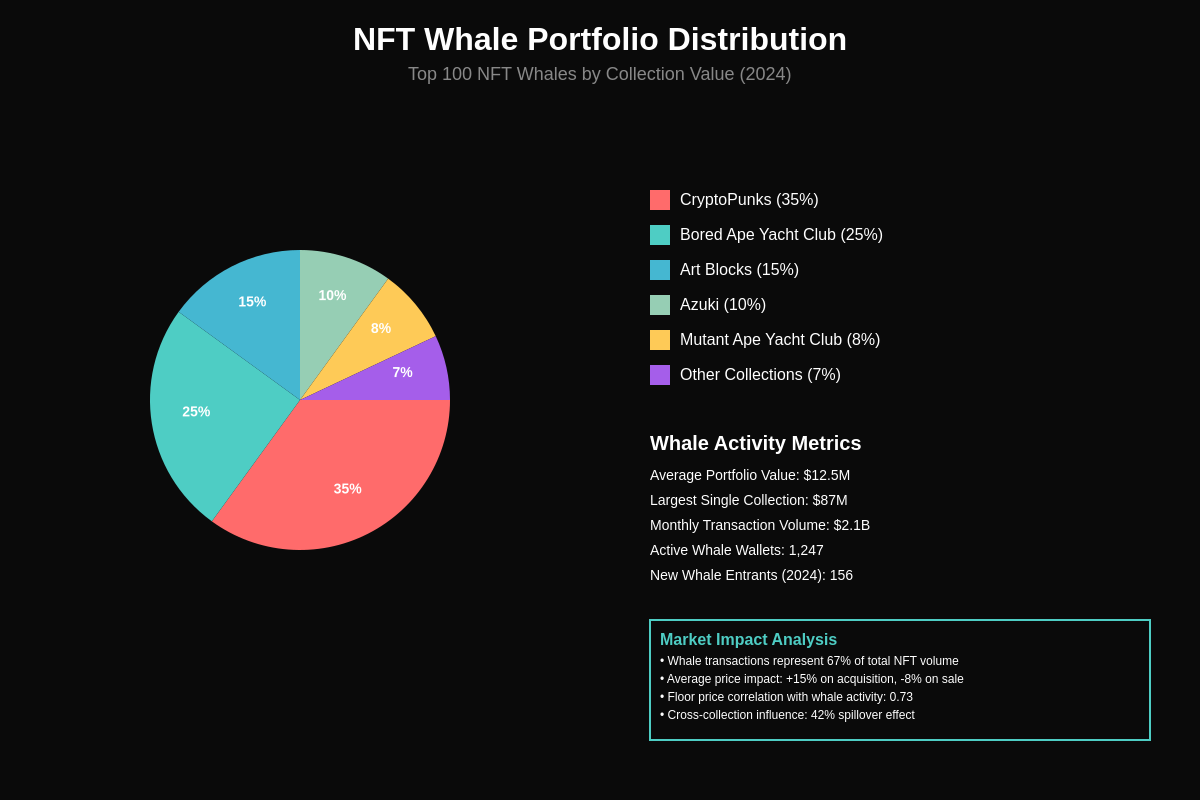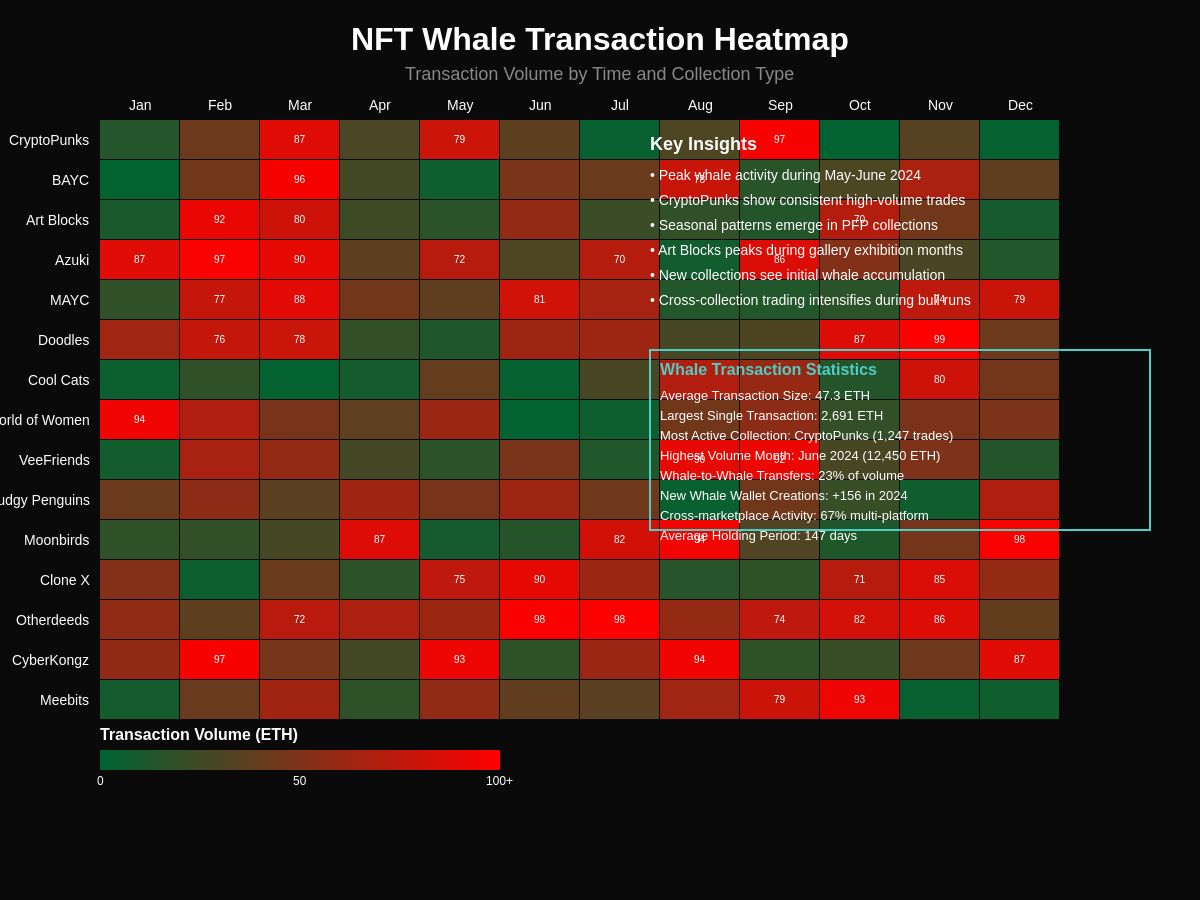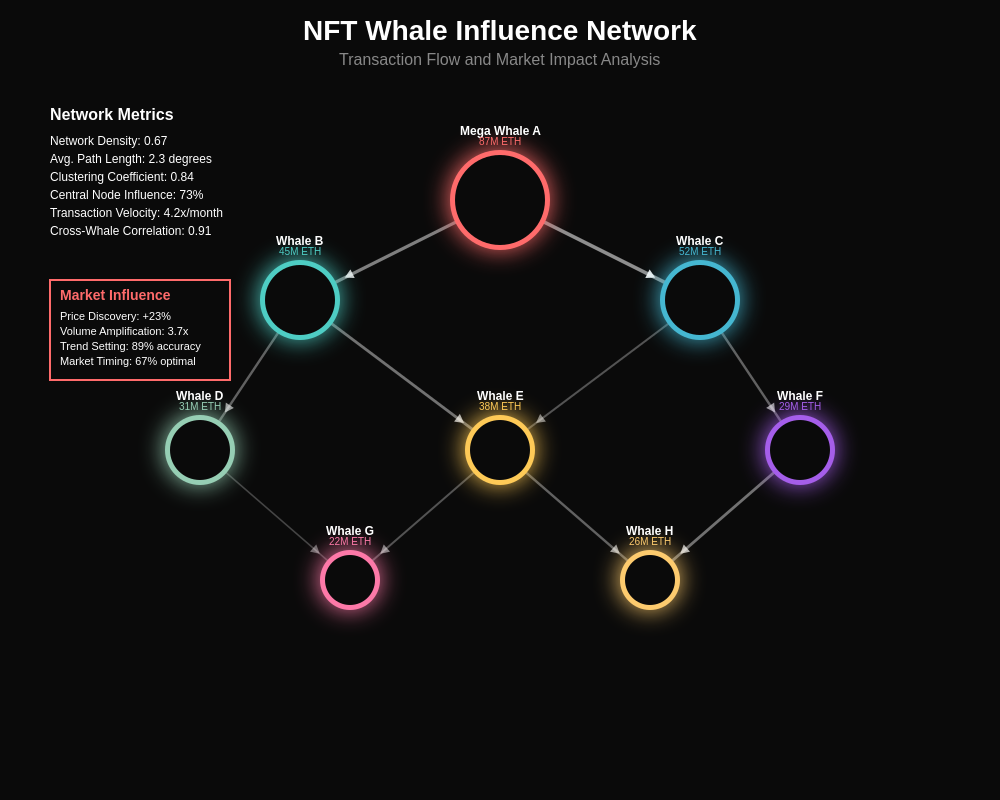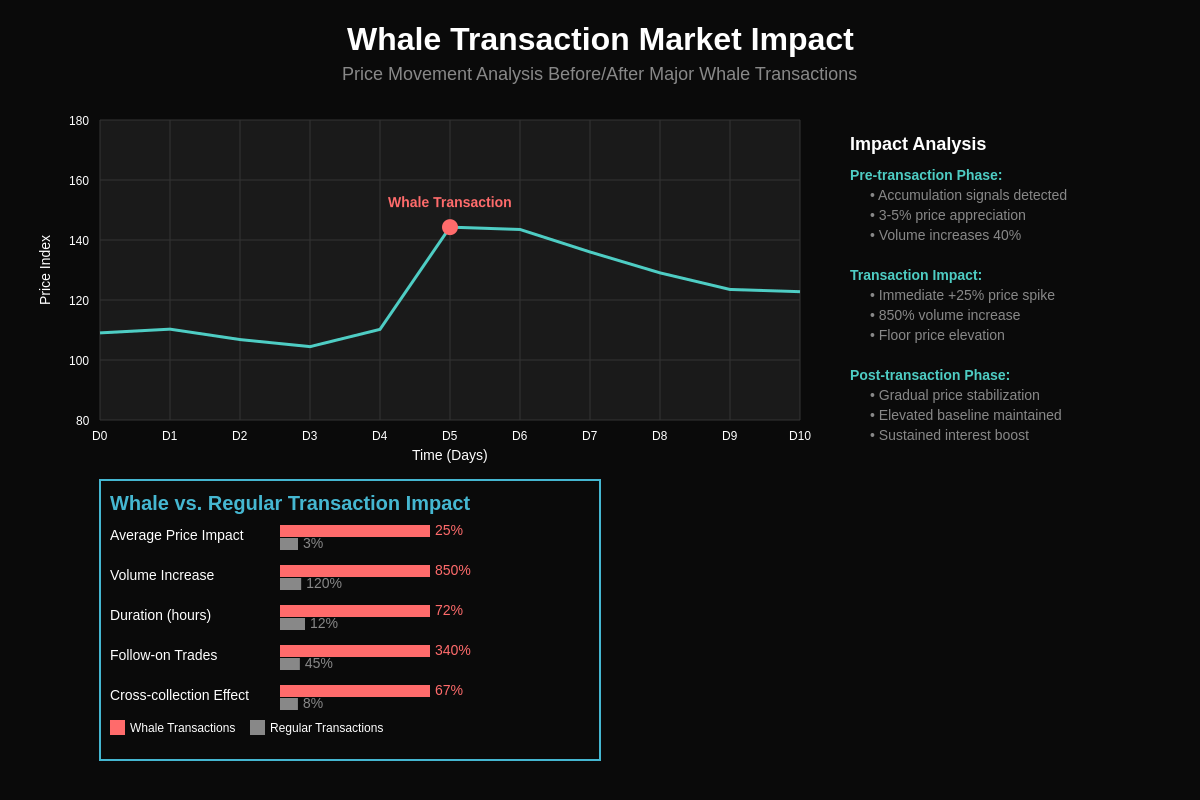Explore advanced TradingView features for analyzing NFT market data at https://www.tradingview.com/pine-script-reference/v6/?aff_id=112991&source=pine-15-tradingview
The Emergence of NFT Whale Activity
The non-fungible token market has witnessed the emergence of sophisticated high-net-worth collectors and institutional investors who deploy substantial capital to acquire premium digital assets, creating a new class of market participants known as NFT whales. These large-scale collectors have fundamentally reshaped the digital collectibles landscape by driving price discovery, establishing market valuations, and creating liquidity patterns that influence the broader NFT ecosystem.

NFT whales typically control portfolios worth millions of dollars in digital assets, with some individual collections valued at over $100 million in high-end pieces from prestigious projects like CryptoPunks, Bored Ape Yacht Club, and Art Blocks. These collectors operate with sophisticated acquisition strategies that combine technical analysis, fundamental research, and market sentiment evaluation to identify undervalued assets and emerging trends before they gain mainstream attention.
The influence of whale activity extends beyond individual transactions to shape entire market segments, with large acquisitions often triggering increased interest and price appreciation across related collections. When prominent NFT whales purchase assets from specific projects or artists, their activities are closely monitored by smaller collectors and traders who view these transactions as validation of artistic merit or investment potential.
Market Dynamics and Price Impact
The concentration of significant NFT holdings among a relatively small number of whale collectors creates unique market dynamics that differ substantially from traditional collectibles markets or even cryptocurrency trading patterns. When NFT whales decide to acquire or liquidate substantial positions, their transactions can generate immediate and sustained price movements that ripple through related collections and the broader digital art market.
Price impact analysis reveals that whale transactions often establish new price floors for premium NFT collections, particularly when these large collectors demonstrate sustained accumulation patterns over extended periods. Market analysis tools on TradingView have become essential for tracking these whale movements and understanding their implications for portfolio management and investment strategies.
The timing of whale acquisitions frequently coincides with significant market events including major art gallery exhibitions, celebrity endorsements, mainstream media coverage, or technological developments that enhance the utility or perceived value of specific NFT projects. These coordinated activities suggest that successful NFT whales maintain sophisticated information networks and market intelligence capabilities that enable them to anticipate and capitalize on emerging trends.
Identification and Tracking Methodologies
Blockchain analysis has enabled the development of sophisticated methodologies for identifying and tracking NFT whale activities across multiple marketplaces and collections. These tracking systems analyze transaction patterns, wallet clustering techniques, and cross-platform activities to build comprehensive profiles of major collectors and their investment strategies.
Advanced analytics platforms employ machine learning algorithms to identify whale wallets based on transaction volume, collection diversity, holding periods, and purchasing patterns that distinguish institutional or high-net-worth collectors from typical retail participants. These identification systems continuously monitor blockchain data to detect new whale entrants and track changes in existing whale portfolios in real-time.

The tracking of NFT whale activities has revealed several distinct collector archetypes including art-focused collectors who prioritize aesthetic and cultural significance, utility-focused whales who accumulate NFTs with gaming or metaverse applications, and speculative traders who employ rapid accumulation and distribution strategies to capitalize on short-term price movements. Understanding these different whale behaviors provides valuable insights for market participants seeking to align their strategies with larger market forces.
Investment Strategies and Collection Management
NFT whales employ diverse investment strategies that range from long-term collection building focused on blue-chip projects to sophisticated arbitrage operations that exploit price differences across multiple marketplaces. The most successful whale collectors often develop specialized expertise in specific market segments such as generative art, profile picture projects, gaming assets, or digital real estate.
Collection management strategies employed by NFT whales typically involve diversification across multiple projects and asset types to reduce concentration risk while maintaining exposure to high-growth potential categories. Many whales actively participate in the primary minting process for new projects, using their market knowledge and technical resources to secure allocation in high-demand drops before secondary market premiums develop.
Risk management approaches used by sophisticated NFT whales include position sizing based on project fundamentals, technical analysis of floor price trends, and careful monitoring of community engagement metrics that can signal changes in project sustainability or collector interest. These risk management techniques often incorporate advanced charting capabilities to track price movements and identify optimal entry and exit points for major positions.
Market Manipulation and Ethical Concerns
The concentration of significant market power among NFT whales has raised concerns about potential market manipulation and the creation of artificial scarcity that can distort price discovery mechanisms. Some whale collectors have been accused of coordinating purchases to inflate floor prices or using wash trading techniques to create the appearance of increased demand for specific collections.
Regulatory scrutiny of NFT whale activities has intensified as authorities examine whether certain large-scale trading patterns constitute market manipulation under existing securities laws or consumer protection regulations. The pseudonymous nature of blockchain transactions complicates regulatory oversight, though sophisticated analysis techniques can often link wallet addresses to real-world identities through exchange interactions and other identifying activities.
Ethical considerations surrounding NFT whale activities include concerns about market accessibility for smaller collectors, the potential for whales to exploit information asymmetries, and the impact of concentrated ownership on the decentralized ethos that originally motivated many NFT projects. These concerns have led some projects to implement whale-resistant mechanisms such as purchase limits or community-focused allocation strategies.
Technology Infrastructure and Analytics
The tracking and analysis of NFT whale activities relies on sophisticated technology infrastructure that combines blockchain data indexing, real-time transaction monitoring, and advanced analytics capabilities. Professional-grade whale tracking platforms process millions of transactions daily to identify significant movements and provide actionable intelligence for market participants.
Data visualization tools have become essential for understanding complex whale trading patterns and their market implications, with specialized dashboards displaying portfolio compositions, transaction histories, and cross-collection activities for major collectors. These analytical tools often integrate with trading platforms to enable automated alerts and portfolio tracking capabilities for professional investors.
The development of predictive analytics models that incorporate whale activity patterns represents a frontier area in NFT market analysis, with some platforms claiming the ability to forecast price movements based on whale accumulation or distribution patterns. These predictive capabilities, while still evolving, demonstrate the increasing sophistication of NFT market analysis and the growing institutionalization of digital collectibles trading.
Cross-Platform Analysis and Behavior Patterns
NFT whale activities span multiple marketplaces and blockchain networks, requiring comprehensive cross-platform analysis to understand the full scope of their market influence. Major whales often maintain active positions across Ethereum, Solana, Polygon, and other blockchain networks, creating complex trading patterns that can be difficult to track without sophisticated analytical tools.
Behavioral pattern analysis reveals that successful NFT whales often exhibit consistent characteristics including systematic research methodologies, disciplined position sizing, and patient accumulation strategies that prioritize long-term value creation over short-term speculation. These patterns suggest that sustainable success in NFT collecting requires institutional-level approaches to market analysis and portfolio management.

The emergence of whale-following strategies among smaller collectors has created secondary market effects where the publication of whale transactions can trigger increased interest and price appreciation in affected collections. This phenomenon has led some whales to employ more sophisticated privacy techniques to conceal their activities and prevent front-running by other market participants.
Economic Impact and Market Efficiency
The activities of NFT whales contribute significantly to market liquidity and price discovery in digital collectibles markets, though their impact on market efficiency remains a subject of ongoing debate. Large whale transactions provide valuable price reference points for similar assets while their sustained collection activities can establish and maintain price floors for premium NFT projects.
Economic analysis suggests that whale participation enhances market depth and reduces bid-ask spreads for high-value NFTs, though it may also increase price volatility when large positions are liquidated rapidly. The net effect on market efficiency depends on various factors including the sophistication of whale trading strategies and the transparency of their market activities.
The correlation between whale accumulation patterns and subsequent price performance has become a focus area for quantitative analysis, with some studies suggesting that whale buying activity can be a leading indicator of broader market trends. These correlations have practical implications for both retail collectors seeking to optimize their acquisition strategies and institutional investors evaluating NFT market opportunities.

Regulatory Landscape and Compliance
The regulatory treatment of NFT whale activities varies significantly across jurisdictions, with some regions treating large-scale NFT transactions as securities activities subject to disclosure requirements and market manipulation rules. The lack of clear regulatory frameworks in many jurisdictions creates uncertainty for whale collectors regarding their compliance obligations and potential legal exposure.
Anti-money laundering and know-your-customer requirements increasingly apply to NFT transactions above certain thresholds, particularly when these transactions involve exchanges or marketplaces that operate under traditional financial regulations. These compliance requirements can affect whale trading strategies and may reduce the anonymity that has historically characterized NFT markets.
Tax implications for NFT whale activities represent a complex area where traditional collectibles tax rules may not adequately address the unique characteristics of digital assets. The classification of NFTs as property, securities, or collectibles affects the tax treatment of whale transactions and may influence their investment strategies and holding periods.
Institutional Adoption and Professional Management
The growth of institutional participation in NFT markets has led to the emergence of professional asset management services specifically designed for high-net-worth NFT collectors. These services provide portfolio management, custody solutions, and risk management capabilities that enable whales to deploy larger amounts of capital more efficiently.
Institutional-grade infrastructure for NFT whale activities includes specialized custody solutions that provide enhanced security for high-value digital assets, professional valuation services that support portfolio reporting and insurance requirements, and sophisticated trading platforms that offer advanced order types and execution capabilities.
The development of NFT funds and other pooled investment vehicles has enabled smaller investors to gain exposure to whale-level investment strategies while providing institutional collectors with additional capital sources for large-scale acquisitions. These developments represent the maturation of NFT markets and their integration with traditional investment management practices.
Emerging Trends and Future Developments
Current trends in NFT whale activities include increased focus on utility-driven assets such as gaming NFTs and metaverse real estate, growing interest in programmable NFTs with dynamic characteristics, and the development of more sophisticated portfolio diversification strategies across multiple blockchain networks and asset categories.
The integration of artificial intelligence and machine learning technologies is enhancing whale trading capabilities through automated market analysis, predictive modeling, and algorithmic trading strategies that can process vast amounts of market data to identify optimal trading opportunities. These technological advances are likely to increase the sophistication and efficiency of whale trading activities.
Future developments in NFT whale tracking and analysis may include enhanced privacy features that balance transparency requirements with collector privacy preferences, improved cross-chain analytics capabilities that provide comprehensive views of whale activities across all blockchain networks, and the development of standardized metrics for evaluating whale impact on market stability and efficiency.
Risk Assessment and Portfolio Protection
NFT whale portfolios face unique risks including technological obsolescence, regulatory changes, market manipulation, and the concentration risk associated with holding large positions in specific projects or artists. Sophisticated whale collectors implement comprehensive risk management frameworks that address these various risk factors through diversification, hedging strategies, and regular portfolio rebalancing.
Insurance solutions for high-value NFT collections have emerged as an important risk management tool for whale collectors, though coverage options remain limited and expensive relative to traditional art insurance. The development of more comprehensive insurance products represents an important infrastructure development that could enable larger institutional participation in NFT markets.
The establishment of professional storage and custody solutions specifically designed for NFT whales addresses concerns about wallet security, key management, and succession planning that become critical when dealing with portfolios worth millions of dollars. These custody solutions often incorporate multi-signature security, hardware security modules, and sophisticated access controls to protect against various threats.
Advanced NFT portfolio tracking and analysis tools are available at https://www.tradingview.com/pine-script-reference/v6/?aff_id=112991&source=pine-15-tradingview
Conclusion and Market Outlook
The influence of NFT whales on digital collectibles markets continues to evolve as these sophisticated collectors adapt their strategies to changing market conditions, regulatory developments, and technological innovations. Their activities provide valuable market leadership and liquidity while raising important questions about market concentration and accessibility for smaller participants.
Understanding whale behavior patterns and market impact represents essential knowledge for anyone seeking to participate successfully in NFT markets, whether as collectors, traders, or project creators. The transparency provided by blockchain technology enables unprecedented insights into large collector activities, though the complexity of these markets requires sophisticated analytical tools and methodologies to generate actionable intelligence.
The future development of NFT markets will likely be significantly influenced by how whale activities evolve in response to regulatory clarification, technological advancement, and the broader adoption of digital collectibles by mainstream institutions and retail participants. Monitoring these developments through comprehensive whale tracking and analysis will remain critical for understanding market dynamics and identifying emerging investment opportunities.
Explore comprehensive market analysis tools and educational resources at https://www.tradingview.com/pine-script-reference/v6/?aff_id=112991&source=pine-15-tradingview
Disclaimer: This article is for informational purposes only and does not constitute financial advice. NFT investments carry significant risks including total loss of capital, market volatility, regulatory uncertainty, and technological risks. The NFT market is highly speculative and largely unregulated. Past performance does not guarantee future results. Readers should conduct their own research and consult with qualified financial advisors before making any investment decisions. The analysis of whale activities does not constitute recommendations to follow any particular trading strategy. Market manipulation and fraud are significant risks in NFT markets. Always verify the authenticity and provenance of NFTs before purchase and be aware that digital assets may become worthless due to technological changes, regulatory actions, or market conditions.